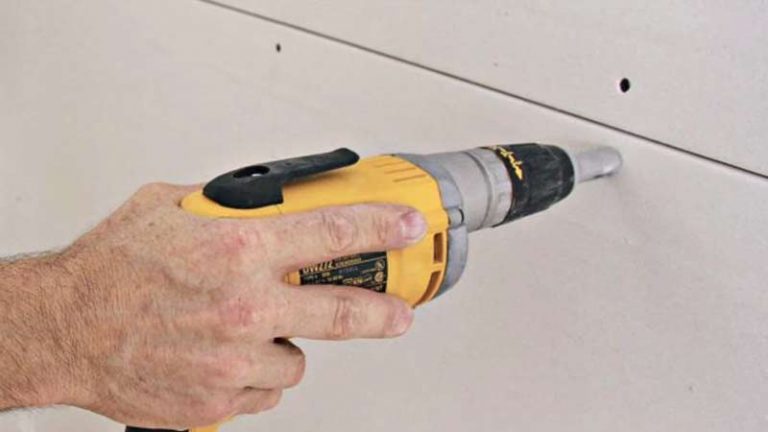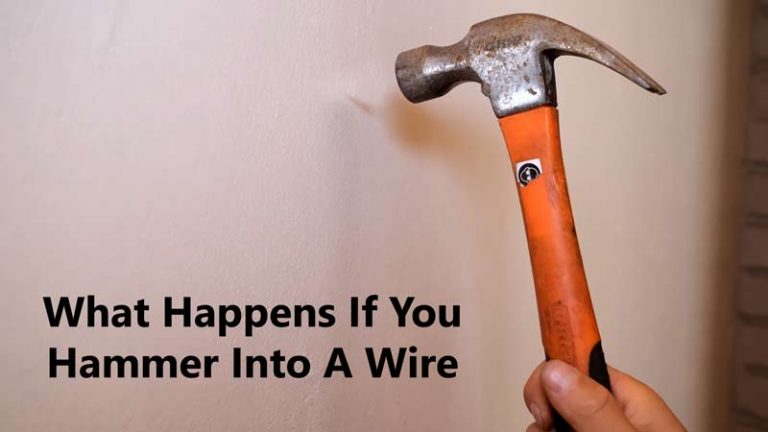Does Rewiring a House Add Value? The Shocking ROI Revealed
You’ve found the perfect house. It has charm, character, and sits in the right neighborhood, but a home inspection reveals a hidden problem lurking behind the walls: outdated electrical wiring. Suddenly, you’re faced with a costly and disruptive project, leaving you to wonder if the investment is truly worth it. This scenario is incredibly common for owners of older homes, creating a significant point of anxiety and financial uncertainty.
The core problem is that old wiring isn’t just an inconvenience; it’s a major safety hazard and a significant roadblock for modern living. Many older homes simply weren’t designed to handle the electrical load of today’s technology-driven lifestyles, leading to frequently tripped breakers, flickering lights, and an inability to use modern appliances. More critically, degraded or obsolete wiring systems are a leading cause of residential fires, posing a direct threat to your family and property.
This article dives deep into the tangible and intangible value that rewiring your home provides. We will explore not just the return on investment from a resale perspective, but also the profound impact on safety, insurability, and your ability to enjoy a modern, connected lifestyle. By understanding the full scope of benefits, you can make an informed and confident decision about this crucial home improvement project.
You'll Learn About
The Hidden Dangers: Why Outdated Wiring Is More Than an Inconvenience
The wiring in your home is like its central nervous system, powering everything from your morning coffee maker to your evening entertainment. When this system is outdated, it can create a host of problems that range from daily frustrations to catastrophic failures. Recognizing the signs and understanding the risks are the first steps toward a safer, more functional home.
Many homes built before the 1970s still contain wiring systems that are now considered obsolete and dangerous. Knob-and-tube wiring, common before the 1940s, lacks a ground wire, a critical safety feature. Similarly, aluminum wiring, used in the 1960s and 70s, is prone to overheating at connection points, creating a serious fire hazard. Ignoring these systems isn’t a risk worth taking.
Even if the wiring type isn’t inherently problematic, age itself is a factor. Insulation around wires can become brittle and crack over decades, exposing the live conductor. This degradation dramatically increases the risk of short circuits, arcing, and electrical fires. The peace of mind that comes with knowing your home’s electrical system is safe and up to code is invaluable.
Recognizing the Warning Signs of Faulty Wiring
You don’t need to be an electrician to spot the tell-tale signs of an electrical system under strain. Paying attention to these signals is crucial for preventing a potential disaster. If you experience any of the following, it’s time to have your system professionally inspected.
Common red flags include circuit breakers that trip frequently or fuses that blow regularly. This indicates that your circuits are overloaded. Flickering or dimming lights when you turn on a major appliance, such as a vacuum or microwave, also point to an electrical system struggling to keep up with demand. Do not ignore these persistent warnings.
Other physical signs can be even more alarming. Look for discolored or scorched outlets and switch plates, which suggest dangerous heat buildup. A persistent burning smell or sparks from an outlet are urgent warnings that require immediate attention from a qualified electrician. Acting quickly can prevent a small problem from becoming a major catastrophe.
The Tangible ROI: How Rewiring Directly Boosts Your Home’s Value
While safety is the primary motivation for a rewire, many homeowners are understandably concerned about the financial return. The good news is that updating your electrical system is a strategic investment that can significantly increase your property’s market value and appeal. It’s an improvement that pays dividends, both in the short and long term.
Real estate experts generally agree that a full house rewire can increase a home’s value by approximately 3% to 5%. For a $400,000 home, that translates to a value increase of $12,000 to $20,000. This often covers a substantial portion, if not all, of the project’s cost, making it a sound financial decision, especially if you plan to sell in the near future.
However, the value isn’t just in the numbers. A newly rewired home is a major selling point for savvy buyers. It removes a huge potential expense and headache for the next owner, making your property far more attractive than a comparable home with an outdated system. This can lead to a faster sale and a stronger negotiating position.
Appealing to the Modern Homebuyer
Today’s homebuyers are more discerning than ever. They are looking for move-in ready homes that can support their connected lifestyles without the need for immediate, costly upgrades. An updated electrical system is a powerful signal that a home has been well-maintained and is prepared for the future.
A modern electrical system is the backbone of a smart home. With new wiring, you can easily integrate smart lighting, automated thermostats, security systems, and other technologies that are increasingly desirable. This “future-proofing” is a significant advantage in a competitive real estate market.

Furthermore, outdated wiring can be a deal-breaker during the home inspection process. A report flagging knob-and-tube or aluminum wiring can scare off potential buyers or lead to demands for significant price reductions. Proactively addressing the issue puts you in control of the situation and prevents last-minute complications that could jeopardize the sale.
Insurance and Financing: The Hidden Financial Hurdles of Old Wiring
Beyond the direct impact on resale value, obsolete wiring presents significant challenges with home insurance and financing. Many insurance companies are hesitant to cover homes with older systems like knob-and-tube due to the high risk of fire. In some cases, they may refuse coverage altogether or charge substantially higher premiums.
This insurance issue directly affects a buyer’s ability to secure a mortgage, as proof of insurance is a standard requirement for lenders. By rewiring your home, you eliminate this obstacle, broadening your pool of potential buyers to include those who are not paying with cash. This simple fact can dramatically improve your home’s marketability.
Even if you’re not planning to sell, updating your wiring can lead to lower homeowner’s insurance premiums. The reduced risk of fire and electrical issues makes your home a safer bet for insurers. It’s an investment in safety that also provides a direct, recurring financial benefit.
Beyond the Bottom Line: Intangible Benefits of a Full Rewire
The value of rewiring a house isn’t measured solely in dollars and cents. The project delivers a wealth of intangible benefits that enhance your daily life, providing convenience, comfort, and, most importantly, peace of mind. These quality-of-life improvements are often just as compelling as the financial returns.
One of the most immediate benefits is the ability to fully utilize modern technology. A new electrical system with an upgraded panel can handle the load of high-power appliances, multiple computers, home entertainment systems, and electric vehicle chargers without issue. You’ll no longer have to worry about tripping a breaker every time you use the hairdryer and the microwave simultaneously.
This increased electrical capacity transforms your living space. You can install modern lighting fixtures, add outlets where they are most needed, and create a home that is perfectly tailored to your lifestyle. The freedom and functionality that come with a robust electrical system are benefits you will appreciate every single day.
The Unseen Value of Code Compliance and Safety
Electrical codes are not arbitrary rules; they are safety standards developed over decades to protect people and property. Bringing your home’s wiring up to the current National Electrical Code (NEC) is a critical step in ensuring your family’s safety. This is particularly important during major renovations, which often legally require system upgrades.
A proper rewire ensures that all circuits are protected by modern circuit breakers, that outlets in “wet” areas like kitchens and bathrooms have GFCI (Ground Fault Circuit Interrupter) protection, and that the system is properly grounded. These features are designed to prevent electrical shocks and fires, providing a layer of safety that older systems lack. It’s a foundational improvement that underpins the security of your entire home.
For homeowners undertaking this project, understanding the legal requirements is key. Often, a permit to rewire your house is necessary to ensure the work is inspected and meets all safety standards. Tackling this without the proper permissions can lead to significant issues, as any unpermitted electrical work can create problems with insurance and future sales.
The Rewiring Process: What to Expect
Embarking on a full house rewire is a significant undertaking, but with proper planning, it can be managed with minimal disruption. The process typically involves replacing all the old wiring, outlets, switches, and the main electrical panel. Understanding the steps involved will help you prepare and ensure a smooth project from start to finish.
First, an electrician will assess your home’s current system and your future electrical needs to plan the new layout. The next, more invasive, phase involves accessing the wires behind the walls. For homeowners with specific challenges, such as wanting to rewire a house with plaster walls, skilled electricians can use techniques to minimize damage.
While the process can be messy, a professional crew will work to contain dust and debris. The project can take anywhere from a few days to a couple of weeks, depending on the size and complexity of your home. Once the new wiring is installed, the walls are patched and repaired, leaving you with a safe, modern, and powerful electrical system.
Cost vs. Value: A Detailed Breakdown
The cost of rewiring a house varies widely based on factors like the home’s size, age, accessibility of the wiring, and local labor rates. On average, you can expect to pay between $2 and $4 per square foot. For a typical 2,000-square-foot home, the total cost could range from $4,000 to $8,000 or more.
While this is a significant upfront cost, it’s essential to view it in the context of the value it provides. As discussed, the increase in home value can offset a large portion of this expense. When you also factor in the prevention of potential fire damage, lower insurance premiums, and enhanced functionality, the long-term value becomes exceptionally clear.
| Feature | Outdated Wiring System | Modern Rewired System |
|---|---|---|
| Safety | High risk of fire, lack of grounding, degraded insulation. | Meets current NEC safety codes, includes AFCI/GFCI protection, properly grounded. |
| Capacity | Low amperage (e.g., 60 amps), easily overloaded by modern appliances. | Higher capacity (150-200 amps), supports multiple high-power devices simultaneously. |
| Insurability | Difficult or expensive to insure; may be uninsurable. | Easily insurable, often qualifies for lower premiums. |
| Resale Value | Decreases home value; major red flag for buyers and inspectors. | Increases home value by 3-5%; strong selling point. |
| Functionality | Flickering lights, tripped breakers, insufficient outlets. | Stable power, supports smart home technology, ample outlets. |
| Future-Proofing | Incompatible with future technologies like EV chargers. | Ready for future electrical demands and smart home integration. |
Making the Final Decision: Is a Rewire Right for You?
Deciding to rewire your house is a major decision, but it’s an investment in the safety, functionality, and value of your most important asset. If your home has outdated wiring, the question is less about *if* you should rewire and more about *when*. The risks associated with faulty electrical systems are simply too great to ignore.
By upgrading your wiring, you are not just performing a repair; you are fundamentally improving your home. You’re making it safer for your family, more capable of handling modern life, and more valuable to future buyers. It is a comprehensive solution that addresses hidden dangers while unlocking your home’s full potential.
Ultimately, a full house rewire provides an undeniable return on investment. From the enhanced market value and lower insurance costs to the daily convenience and priceless peace of mind, the benefits are clear and compelling. It is a powerful upgrade that protects your home and prepares it for the future.


